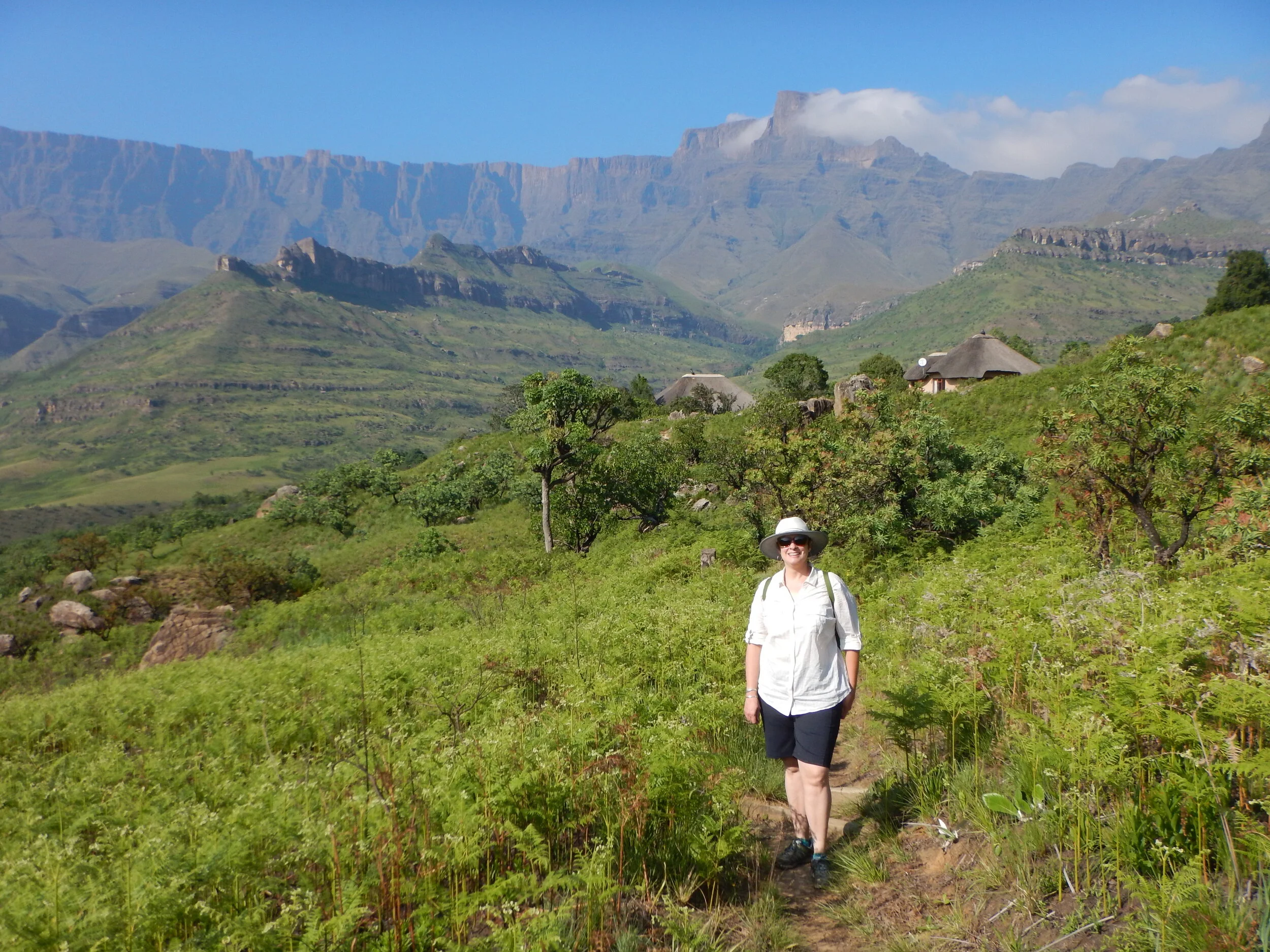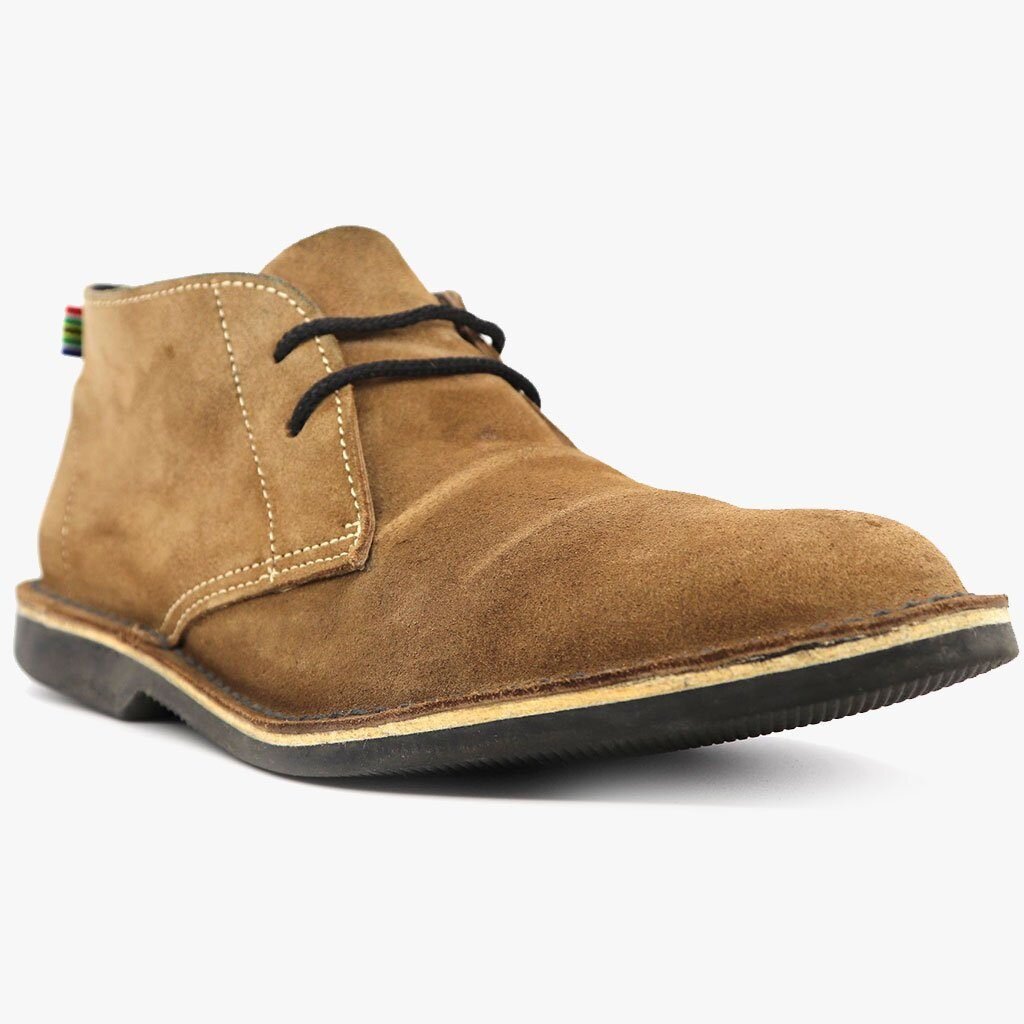Preparing for safari blog route map. You are here:
Mindset and research – how to think about packing and do your homework
Luggage – picking the right container
Personal bag – ready for anything
How to pack – the ABCs
Clothing – dress for success
Safari kit – what do you really need?
What not to bring
Preparing with purpose – thinking about your impact
Clothing - dress for success
Overall approach
Your clothing needs to keep you comfortable, protect you from the elements, and help you blend into your surroundings. The best clothing is the kind you don’t notice you’re wearing – instead you can focus on the beauty of your surroundings and enjoy the activities you’re doing. In order to keep your overall packed weight and volume low, each piece of clothing should serve multiple purposes where possible (unless activities dictate specific requirements).
The volunteer game rangers in Tembe Elephant Park know how to dress for the conditions. Photo by Kenneth Jones.
Built-in bug protection
If you’re buying new clothing for the trip, consider options that are made with permethrin. Certain manufacturers add this compound, which is an insecticide, to clothing. The theoretical advantage of turning your clothing into bug-proof armor is obvious. Does it work? Mostly. I have had good results with permethrin-infused clothing in mosquito-rich areas. It’s important to note that wearing chemically enhanced clothing is not, by itself, a comprehensive solution to protection from insects and the diseases they carry. It can make life more pleasant, but you should still plan to take a full suite of precautions against the little buggers.
Do you want to wear clothing infused with insecticide? It’s a fair question. My position is that I’m going to be exposed to health hazards throughout my trip, whether sick passengers on my flight, diesel exhaust fumes, or dangerous road traffic. The risks of insecticide exposure from clothing don’t worry me as much as the misery of contracting malaria or sleeping sickness.
Insects aren’t just annoying, their bites can be painful and some carry disease. Clothing can be part of your defense against these hazards. Your trip will be more enjoyable if bugs aren’t pestering you. Photo by Jenna Rizzo.
How and what should you buy? First, you have a multitude of choices at popular retailers. Each company has its own trade name, so make sure you know what the secret sauce is before buying. The price tag of chemically enhanced clothing tends to come at a premium, so an alternative is to add permethrin to clothes you already own. For a modest fee (about $10/garment at the time of this article), you can send your clothing to Insect Shield and they will return it to you treated. For the price of one new shirt you can treat a wardrobe for two people. Don’t forget to include your socks and hat.
A note on camouflage
People routinely wear camo in the U.S., whether as fashion or as a practical measure. It’s no big deal to see someone sporting camo pants or a Mossy Oak jacket. Perceptions of camo in parts of Africa, however, are very different. Here it carries military connotations and is typically only worn by soldiers. Given the complex and painful history of colonialism and, in some instances, the role of the army as a tool of political repression, people in African countries are understandably sensitive about military symbols. Be a good ambassador and leave the camo behind. It’s doubtful people will think you’re a mercenary or part of a foreign force, but there is no need to provoke anxiety or be ignorant even if your intent is to blend in better with the bush.
Footwear
Your footwear is your most important piece of equipment. Even on the most luxurious safari you will do some walking. Your shoes need to be comfortable, versatile, and well-suited to the environment. It’s tempting to bring a wide selection but you can probably manage with two pairs.
Aaah, nothing beats a good pair of trail runners for lightweight, stable, all day comfort. Don’t buy a pair right before your trip. Log a lot of miles on them in advance to make sure there are no latent comfort issues. I failed on the subtle color with these. Photo by Nick Bratton.
One pair should be close-toed and stable for walking through the bush over uneven terrain. Light hiking shoes or trail runners are great choices because they offer adequate protection, they are breathable, and they grip well. Boots can be overkill unless you’ll be backpacking or venturing into extremely rugged terrain. Likewise, leave behind anything waterproof – your feet will swelter. Choose a subtle color – these will also be shoes you want to wear to dinner. If you want to go old school check out veldschoens, the classic leather field shoes. They may not have the performance of light trail hikers, but the design has stood the test of time. Whatever you choose, cover some ground in them before your trip to make sure they don’t cause discomfort. I never recommend a particular brand of shoes because every person’s feet are different. Let the quality of the fit guide your choice.
The timeless veldschoen. The genuine article is hand-made in southern Africa. This is a durable and quality shoe. Also a classier fashion choice than my gaudy trail runners above. Photo from veldskoenshoes.com.
The second pair should be sandals. These are not well suited for tromping through the bush but for hanging around camp, going to the beach, walking around town, or any water-related activities they are great. Sandals with heel straps will be more secure – flip flops are not nearly as functional. I’m a fan of Chacos for their versatility and ruggedness, but there are plenty of quality options out there.
Two good choices for sandals - grippy soles for all terrains, no Velcro, and secure attachments for a wide range of activities. Photo by Nick Bratton.
Shirts
This is a field with almost endless choice. On safari your shirt needs to protect you from the sun, keep you comfortable in the heat, deter insects, manage moisture, help you blend into the landscape, and look presentable at dinner. Anton Vosloo, owner of Lelobu Safaris in Botswana, gives guidance on color based on experience: bright colors (including white) reveal your position and blue attracts tsetse flies, so shades of tan and khaki are best suited to clothing. A loose fit will help air circulation.
Short or long sleeve? I’m a fan of long sleeves for a number of reasons. They offer more protection from sun, vegetation, and bugs, plus they are more comfortable in cool evenings. Many shirts feature tabs that keep sleeves rolled up, effectively allowing you to wear short or long sleeves as you like.
What material? I’m a fan of nylon, but choose carefully because not all varieties will feel comfortable. Nylon has the advantages of being light, breathable, offering excellent sun protection, quick-drying, and tough, but not everyone enjoys the feel of synthetic fabric. I avoid polyester and poly blends, these can feel like wearing plastic. Some manufacturers make nylon shirts that feel like cotton. My all-time top choice is the Halo BugsAway long sleeve shirt by ExOfficio. Its performance shines in every area, the fabric feels comfortable in all conditions, and it looks good enough to wear out to a nice restaurant. I bring two of these shirts.
The ExOfficio Halo shirt does it all for me. It feels soft like cotton, I can wear it with long or short sleeves, and with a subtle check pattern it doesn’t look like a safari shirt. Photo by Nick Bratton.
There is also an argument to be made for cotton. Unlike nylon it absorbs moisture. In the heat of the day the evaporative cooling from a sweat-soaked shirt might be welcome, but in a chilly rain it will be miserable. I take one cotton shirt for variety. I like to support local manufacturers (see preparing with purpose section) and the Tag clothing company makes their high-quality products in Zimbabwe.
It’s cotton, it’s hand-made in Zimbabwe, it is durable and comfortable. What’s not to love about the Tag shirt? Plus you will fit right in with the volunteer game rangers in Tembe Elephant Park. Photo by Nick Bratton.
Pants & shorts
The same properties you want in a shirt also apply to pants. Nylon wins again here for me, especially with a bit of stretch. I take two pairs of pants. One is always ready for use when you need to wash the other. As with shirts, there is a plethora of choices on the market. My experience keeps me coming back to the ExOfficio Amphi pants and Patagonia Quandary pants for their fit and performance. Spend time hiking around in your trousers to make sure they feel good after a few hours. (Endorsement disclosure: I receive a discount from Patagonia.)
Convertible pants (the legs zip off to become shorts) are an attractive option for many travelers. They score high in the versatility department and have their benefits if you take advantage of them.
The ExOfficio Amphi pants and Amphi shorts are hands down the most comfortable clothing I’ve ever worn. Look for these on the secondary market and get the older model with the integrated belt and - most importantly - the mesh liner. It makes a world of difference.
Shorts
I take one pair of shorts. These need to perform well for terrestrial and aquatic activities so nylon is the material of choice. A good pair will transition effortlessly from ocean to boat to swimming pool to hiking. In my experience nothing beats a pair of shorts with a mesh liner. This extends their versatility, reduces the amount of underwear you need to bring, and makes for a very comfy fit. The single most comfortable piece of clothing I have ever worn is the ExOfficio Amphi short. Sadly they stopped making these with the mesh liner a few years ago, so I buy the older version pre-owned on ebay for a fraction of the price of new. I’m not ashamed to admit that I have a stockpile of eight pairs in my closet, enough to last the rest of my life (or until they start making them again with the mesh liner).
Shorts aren’t just for chilling by the pool. A good pair is a reliable partner for all kinds of action. My ExOfficio Amphi shorts living up to their name in a remote canyon in South Africa. Photo by Quinton van Deventer.
Sun hat
If you haven’t experienced the intensity of the African sun you will soon appreciate the value of a hat. A sample of the choices are mainly variations on these themes:
Floppy hat. Usually made from cotton or nylon, these have a broad, 360-degree brim. Other common features include a chin string and snaps to fold up the sides of the brim. I like the floppy hat because it’s light, you can cram it into your luggage, you can wash it in a sink, and the sun protection is good.
Baseball cap. The sun protection these offer is limited, but they are functional for athletic activities. They are less vulnerable to getting blown around in the wind and are also good for stuffing into luggage.
Indiana Jones-style hat. These have good sun protection and the look is classic. The main drawback is that their structure makes them poorly suited to cramming them into luggage or a backpack.
Desert hat. This is like a baseball cap with a cape. If you prize sun protection over all other factors this is a functional choice. Also light and compressible.
A good sun hat is essential. The floppy hat is a winner, but don’t turn your back on the rhino for long. Photo by Nick Bratton.
Staying warm and dry
Most people think of Africa as a hot place, but many areas routinely are cold. The highveldt in the dry season gets chilly, parts of South Africa see snow, the mountains in Tanzania and Kenya are snowy, and Lesotho and Morocco have ski resorts. When you do your research before your trip you’ll learn what conditions will be like where you’re going during your visit. If you need warmer clothing here are some guidelines to help choose pieces to keep you warm and dry.
Insulation
A fleece layer or synthetic fiber-fill jacket will keep most people warm enough in most situations and are compressible. Wool sweaters are also toasty but tend to weigh more. A light down jacket has excellent warmth and packs small. This layer can also serve as a pillow.
The lightweight down jacket is a versatile and compressible insulation layer. You bet it’s chilly up here. Photo by Nick Bratton.
Hat and gloves
A warm hat is small, light, and can make a big difference in your comfort in chilly conditions. It also makes excellent mortar in your ABCs of packing. Likewise for gloves if you know your hands get cold. Wearing socks on your hands works as an improvisational measure, but if you anticipate really needing them there is no substitute for the genuine article.
Rain jacket
There are numerous quality options in this realm so to narrow the choices I recommend prioritizing light weight and low bulk. You’ll want a hood and chest pockets. Most modern waterproof-breathable fabrics work reasonably well. It’s possible, but not necessary, to spend a lot of money on a rain jacket. It’s a piece of gear you will probably use at home anyway, so keep in mind future needs if you don’t already own one.
Alright, maybe this isn’t Africa, but it’s a good illustration of the need for your rain jacket to be well-suited to a range of conditions and future uses. Photo by Joe Tuttle.
Undergarments
Don’t skimp on these. You don’t need many: three pairs, max. Unlike shirts and pants, underwear is a good application for polyester. Whatever your style, choose synthetic fabric, which is important for two reasons: it wicks moisture away from your body and dries quickly, so you can wash your used pair in the sink or shower each night and it will be dry by morning. On my feet I wear thin wool running or light hiking socks. Wool in the heat of Africa may sound counterintuitive, but it keeps your feet cool and comfortable. Socks are a great item to get with insect deterrent treatment. I take three pairs total.













